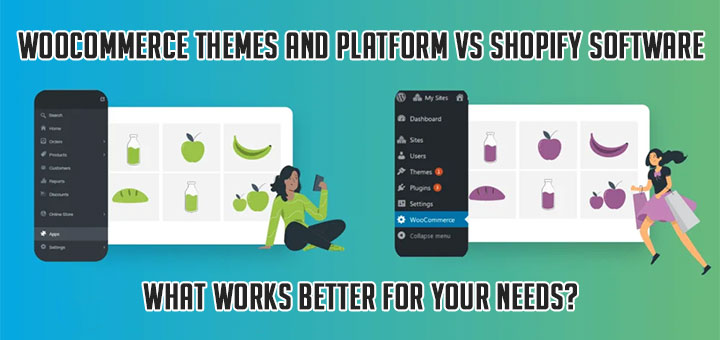How to Get More Orders by Cross-Selling
Cross-Selling is the process of selling additional products or services to your customers based on what they already own. This marketing strategy can be a valuable way to increase your revenue as well as your customer’s satisfaction. In this blog post, we’ll take a look at how you can use cross-selling to get more orders for your eCommerce clothing business. Let’s get started!
What is cross-selling and why is it important to your business
Cross-selling is a sales strategy that involves selling products that are not the main product being sold. Cross-selling is important because it helps increase sales and customer loyalty by giving customers the opportunity to purchase other products that are related to the main product being sold.
For example, if you’re selling kitchen supplies, cross-selling products could include selling kitchen towels, oven mitts, and cutting boards. By selling these related products, you’re increasing the chances that the customer will buy the main product (in this case, kitchen supplies).
Cross-selling is also important because it allows your business to better compete against other businesses. By selling related products, your business can cut down on the amount of time that is needed to sell the main product. This reduces the amount of time that is spent looking for potential customers, which can lead to more sales and higher profits.
So why is cross-selling so important to your business? Because it helps you increase sales and customer loyalty, which are two key factors in a successful business.

How to cross-sell products and services to your customers
Cross-selling is a common marketing strategy that allows you to sell additional products or services to your customers while they’re still in the store. cross-selling can be done in a number of ways, but the most common way is to offer a discount when a customer purchases a product or service that falls within the same category as the product or service you’re selling.
For example, if you’re selling candles, you could offer a discount on candles when a customer purchases a battery-operated fan. This way, you’re not only selling the fan, but you’re also selling the candles at a discounted price.
Another way to cross-sell is to offer a complementary product or service. This can be anything from a free gift to a free consultation to help your customer choose the best product or service for them.
Cross-selling can be a powerful marketing tool, and it’s important to remember that it doesn’t have to be a complicated process. In fact, it can be as simple as offering a discount when a customer purchases a product or service that falls within the same category as the product or service you’re selling.
Tips for cross-selling effectively
Cross-selling is one of the most important aspects of retail sales, and it’s something that you should be doing whether you’re a salesperson or not. Cross-selling is when you sell someone else’s product, service, or brand, and it’s a great way to increase your sales. Here are a few tips for cross-selling effectively:
- Always have a product or service to offer. If you don’t have anything to cross-sell, then you’re essentially selling yourself. If you’re in a clothing store, for example, and you see someone looking at a dress and you don’t have anything to offer them that fits that dress, you can offer to help them find a similar dress in your store that might be a better fit.
- Be prepared to offer a discount. Many times, when someone is looking to buy a product or service that you’re selling, they’ll be willing to buy it at a discounted rate. If you’re selling sunglasses, for example, and you see someone eyeing them up, you might be able to offer them a discount on the sunglasses if they buy them now.
- Know your products. If you’re selling a product that’s made by a company that you know well, be sure to know the features of the product and be able to talk about those features. For example, if you’re selling clothes, you might be able to talk about the fabric and how it’s made.
- Know the competition. If you’re selling a product that’s similar to one that the competition is selling, be sure to know what the competition is offering and be able to offer a better deal on your product. For example, if a competitor is offering a product for $20, you might be able to sell it for $15.5. Know when to cross-sell. People won’t be interested in your products or services if you haven’t built a relationship with them first. If you’re just starting out, be sure to offer something to your customers to incentivize them to buy. For example, if you’re selling sunglasses, you could offer a free cleaning kit.
5 easy steps to cross-selling your products and services
Cross-selling is one of the simplest and most effective ways to increase sales and increase customer loyalty. It’s also a great way to generate additional income. Here are five easy steps to cross-selling your products and services:
- Make a list of the products and services that your business offers.
- Identify which of your products and services are complementary to the others.
- Ask your customers which of your products or services they would like to purchase as a result of their interaction with you.
- Offer them the option to purchase the product or service as a result of their interaction.
- Be sure to follow up with your customers to see how the product or service is working and to offer additional support.
How to create a cross-selling strategy for your business
A cross-selling strategy is a great way to increase sales and increase customer loyalty. Often, cross-selling is when a customer buys an additional product or service as a result of buying the first product or service.
To create a successful cross-selling strategy for your business, there are a few things you’ll need to keep in mind. First, make sure that your products or services are related in some way. For example, if you sell candles, you might want to offer incense as a cross-sell. Second, think about what products or services your customers might need in order to complete a purchase of the first product or service. For example, if you sell candles, you might want to offer holders for the candles as a cross-sell. Third, make sure that your products or services are easy to find and purchase. For example, if you sell candles, you might want to place candles in the same section of your store as holders for the candles.
Finally, make sure to track customer interactions and cross-sells to optimize your strategy. By tracking customer data and cross-sells, you’ll be able to see which products or services are most successful and make changes to your cross-selling strategy accordingly.
Conclusion
We hope you enjoyed our article about using cross-selling in your eCommerce clothing business. Did you find the information useful? Do you have questions or comments? Let us know below!








